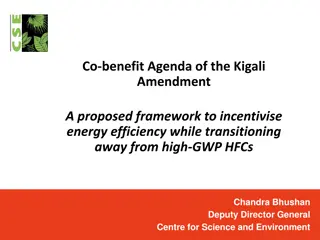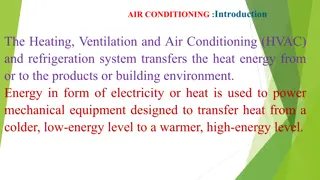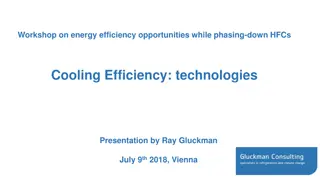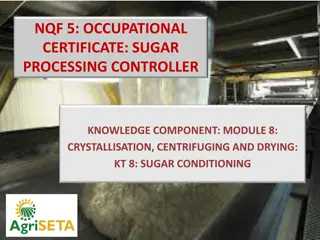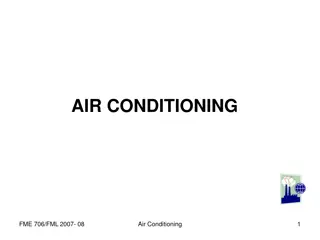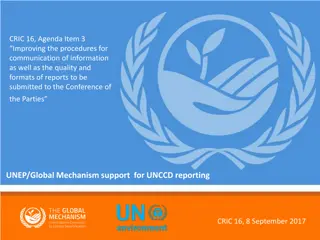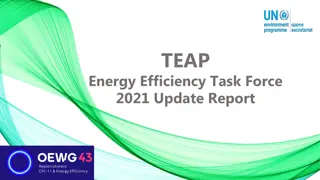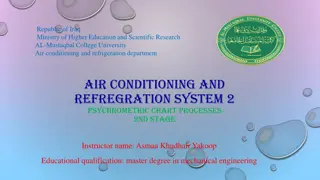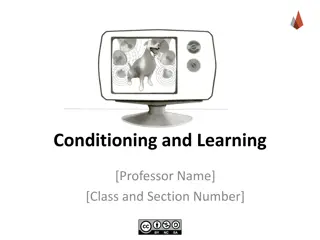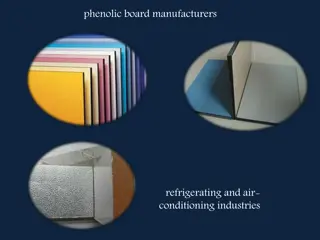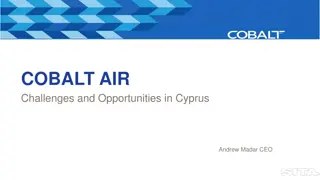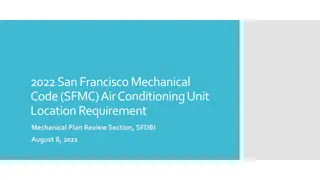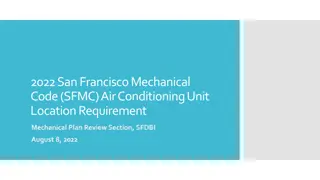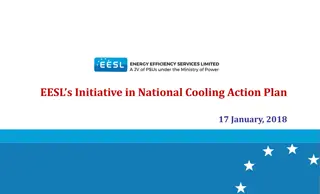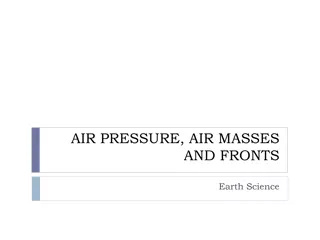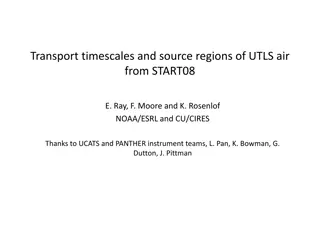Challenges and Opportunities in Addressing High-GWP HFCs in Mobile Air Conditioning: Insights from UNEP Workshop
The UNEP workshop in Bangkok discussed technical issues related to high-GWP HFC management in mobile air conditioning. Experts highlighted the pressure for GWP reduction in Europe, the historical competition between CO2 and R134a, and advancements in technology over the past decade in refrigerant systems. The industry's preference for the status quo with R134a and the search for the best replacement option, such as R1234yf, were key points of discussion.
Download Presentation

Please find below an Image/Link to download the presentation.
The content on the website is provided AS IS for your information and personal use only. It may not be sold, licensed, or shared on other websites without obtaining consent from the author. Download presentation by click this link. If you encounter any issues during the download, it is possible that the publisher has removed the file from their server.
E N D
Presentation Transcript
UNEP Workshop on hydrofluorocarbon management: technical issues, Bangkok, 20 - 21 April 2015 Session 3: Challenges and opportunities in addressing high-GWP HFCs in mobile air-conditioning Overview Pega Hrnjak pega@illinois.edu Co-Director ACRC, Will Stoecker Res. Professor, University of Illinois, Urbana-Champaign, USA President, CTS Creative Thermal Solutions
Pega Hrnjak 2/8 Unique sector uniquely addressed Only one refrigerant - R134a Industry strongly prefers that status to hold The only already regulated EU MAC Directive Significant experience accumulated
Pega Hrnjak 3/8 Situation Real pressure for GWP reduction in Europe, mostly on European OEMs (and transferred to suppliers) US and Asian manufacturers address the issues at European market knowing that development in Europe will spill over to other regions One thing is definitive: MAC is applications where high-GWP HFC (R134a) used is demonstrated to be replaceable with several options The question what is the best option still remains R1234yf current replacement refrigerant
Pega Hrnjak 4/8 Historically Competition between CO2 and R134a (with indirect system considered) ended in selection of R1234yf in 2008 Some refrigerant manufacturers felt excluded and presented competitive approaches which ended being mixtures (R445A as an example) After Daimler s report of R1234yf flammability issues work on its reduction was strengthened to the extent that CO2 as refrigerant was again strongly supported by some OEMs
Pega Hrnjak 5/8 What happened during CO2 vs. R134a era Earlier R134a systems may not have been optimized for efficiency Excellent and motivated engineers realized systems with once disregarded refrigerant (CO2) to perform equally or better than R134a That competition pushed proponents of R134a to improve system efficiency by adopting almost everything developed for CO2 In several steps over ten years we have seen:
Pega Hrnjak 6/8 Technology improvements in 10 years as a consequence of refrigerant competition 5 5 R134a R744 driving (900 rpm) (2000 rpm) idling COP COP 0 0 25oC 35oC 25oC 35oC then now then now then now then now Improvement of efficiency for each system over 10 years at any condition is greater than the difference in system efficiency at any given time. >>
Pega Hrnjak 7/8 Some realized improvements : 1. Internal HX (result: IHX in R134a MAC systems) Feb 22, 2006 DENSO Develops Unique Double-pipe Internal Heat Exchanger for Front Car Air Conditioning Systems: New pipe increases cooling performance by up to 12 percent 2. Evaporator and the control (result: microchannel evaporators for R134a). 3. CO2 comp efficiency is high. (result: R134a Cp w/o suction valve) 4. Work recovery devices: expanders/ejectors (result: first R134a ejector systems in Prius) May 20, 2009 KARIYA, Japan DENSO Corp. said this week it has developed the world s first passenger vehicle air conditioning system that uses ejector technology. The ejector, which is a small refrigerant injector, contributes to an overall reduction in power consumption. The system will be installed on the new Prius, introduced by Toyota this month.
Pega Hrnjak 8/8 Consequently All improvements made for R134a initiated by CO2 were lately applied to R1234yf Additional competition or demands may push new frontiers New high glide options are potentially more cost effective but require further modification of the cycle and HXs to overcome challenging drop-in replacement
Pega Hrnjak 9/8 Current R134a replacement may not be the winner yet R134a is already in phase out process with R1234yf Maybe more costly CO2 performs in a/c mode better at lower temperatures and in more compact systems R1234yf easier at higher ambient temperatures In the case of strengthening the importance of electric vehicles, CO2 gains the ground because no refrigerant comes close R445A also better than R1234yf in heat pumping




